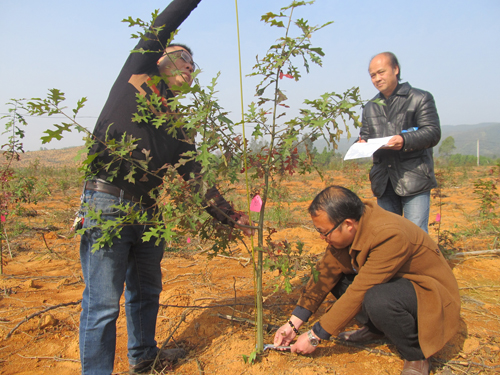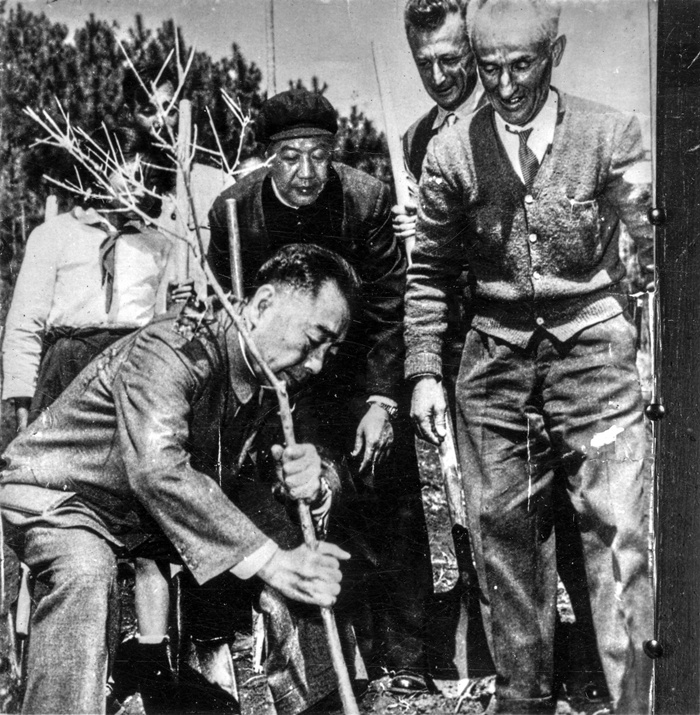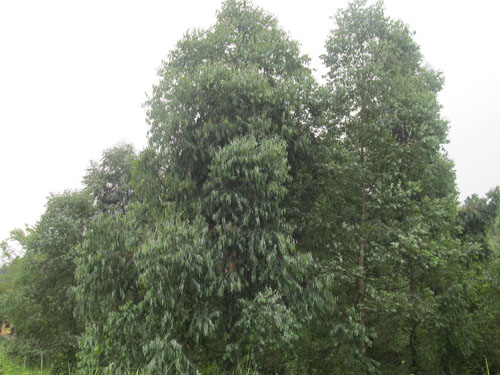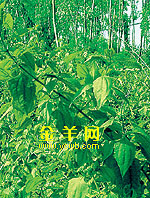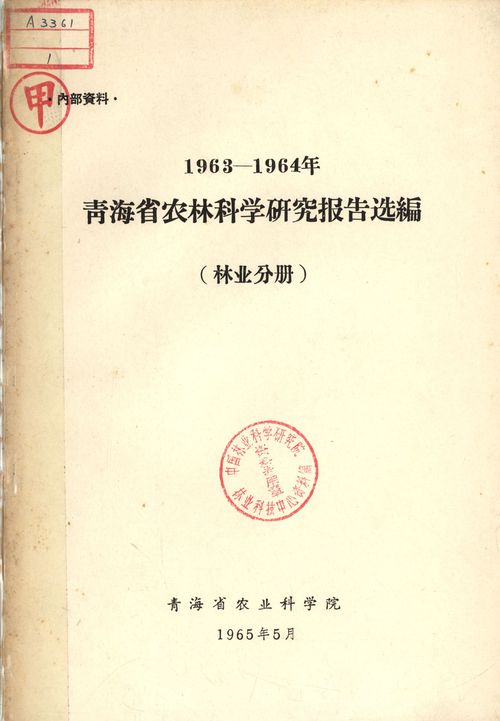
园林植物引种与入侵植物防控
编号
lyqk008840


中文标题
园林植物引种与入侵植物防控


作者
姚驰远
张德顺
Matthias Meyer
李科科


作者单位
1. 同济大学建筑与城市规划学院 上海 20009;
2. 德累斯顿工业大学动植物研究所 德国塔兰特 01735


期刊名称
中国城市林业


年份
2021


卷号
19


期号
2


中文摘要
园林植物引种是历史悠久且永恒的主题,也直接导致了外来植物的比例升高;与此同时,气候变化和土地利用方式的改变又致弱了生态系统韧性,加剧了生物入侵风险。文章在介绍引种和入侵基本概念的基础上,阐述城市生境的可入侵性和外来植物的入侵能力,并提出了预防、控制和利用入侵植物的具体措施,旨在为增加城市生物多样性及有效防止入侵提供对策。


基金项目
国家自然科学基金城市绿地干旱生境的园林树种选择机制研究(31770747)、华东滨海地区抗风园林树种的选择机制研究(32071824);同济大学教学改革研究与建设项目园林植物与应用教学系统优化研究


英文标题
Invasive Plants Prevention and Control in the Introduction of Landscape Plants


作者英文名
Yao Chiyuan, Zhang Deshun, Matthias Meyer, Li Keke


单位英文名
1. College of Architecture and Urban Planning, Tongji University, Shanghai 200092, China;
2. Institute of Forest Botany and Zoology, Dresden University of Technology, Tharandt 01735, Germany


英文摘要
Introduction of plants is an long and eternal theme for landscape architecture, which also directly leads to an increase in the proportion of alien plants. Meanwhile, climate change and land use change weaken the ecosystems resilience and increase the risk of biological invasion. Based on the elementary concepts of plant introduction and invasion, this paper expounds the invasibility of urban habitat and the invasion ability of alien plants, and further proposes the specific measures to prevent, control and utilize invasive plants. This study is aimed to increase the urban biodiversity and effectively prevent the invasion.


英文关键词
alien plant;introduction;invasion;management


起始页码
17


截止页码
21,28


投稿时间
2020/5/6


作者简介
姚驰远(1990-),女,博士后,研究方向为城市生态、绿地健康与园林植物应用。E-mail:cyyao@tongji.edu.cn


通讯作者介绍
张德顺(1964-),男,博士,教授,博士生导师,IUCNSSC委员,研究方向为园林植物规划与景观设计。E-mail:zds@tongji.edu.cn


E-mail
zds@tongji.edu.cn


DOI
10.12169/zgcsly.2020.05.06.0001


参考文献
[1] PYŠEK P,RICHARDSON D M,REJMÁNEK M,et al.Alien plants in checklists and floras:towards better communication between taxonomists and ecologists[J].Taxon,2004,53(1):131-143.
[2] PYŠEK P,PERGL J,ESSL F,et al.Naturalized alien flora of the world:species diversity,taxonomic and phylogenetic patterns,geographic distribution and global hotspots of plant invasion[J].Preslia,2017,89(3):203-274.
[3] RICHARDSON D M,PYŠEK P,REJMÁNEK M,et al.Naturalization and invasion of alien plants:concepts and definitions[J].Diversity and Distributions,2000,6(2):93-107.
[4] KOWARIK I.Biologische invasionen:neophyten und neozoen in mitteleuropa[M].Stuttgart:Verlag Eugn Ulmer GmbH & Co,2003.
[5] KOWARIK I,PYŠEK P.The first steps towards unifying concepts in invasion ecology were made one hundred years ago:revisiting the work of the Swiss botanist albert thellung[J].Diversity and Distributions,2012,18(12):1243-1252.
[6] ELTON C S.The Ecology of invasions by animals and plants[M].London:Methuen & Co,1958.
[7] BONGAARTS J.Summary for policymakers of the global assessment report on biodiversity and ecosystem services of the intergovernmental science-policy platform on biodiversity and ecosystem services[J].Population and Development Review,2019,45(3):680-681.
[8] LOWE S,BROWNE M,BOUDJELAS S,et al.100 of the world's worst invasive alien species,a selection from the global invasive species database[M].Darwin:Hollands Printing Ltd,2004.
[9] 孙卫邦,向其柏.谈生物入侵与外来观赏植物的引种利用[J].中国园林,2004,20(9):54-56.
[10] 孙卫邦.乡土植物与现代城市园林景观建设[J].中国园林,2003,19(7):63-65.
[11] 唐红军.乡土树种在城市绿化中缺少利用的原因[J].中国园林,2004,20(6):73-74.
[12] 孙新旺,王浩,李娴.乡土与园林:乡土景观元素在园林中的运用[J].中国园林,2008,24(8):37-40.
[13] KLEINSCHMIT J R G,KOWNATZKI D,GREGORIUS H R.Adaptational characteristics of attach thonous populations-consequences for provenance delineation[J].Forest Ecology and Management,2004,197(1-3):213-224.
[14] VANDER MIJNSBRUGGE K,BISCHOFF A,SMITH B,et al.A question of origin:where and how to collect seed for ecological restoration[J].Basic and Applied Ecology,2010,11(4):300-311.
[15] PETIT R J,BIALOZYT R,GARNIER-GÉRÉ P,et al.Ecology and genetics of tree invasions:from recent introductions to Quaternary migrations[J].Forest Ecology and Management,2004,197(1-3):117-137.
[16] 许光耀,李洪远,莫训强,等.中国归化植物组成特征及其时空分布格局分析[J].植物生态学报,2019,43(7):601-610.
[17] HEJDA M,PYŠEK P,JAROŠÍK V.Impact of invasive plants on the species richness,diversity and composition of invaded communities[J].Journal of Ecology,2009,97(3):393-403.
[18] CAMPBELL S E,MANDRAK N E.Dissecting spatiotemporal patterns of functional diversity through the lens of Darwin's naturalization conundrum[J].Ecology and Evolution,2017,7(11):3861-3869.
[19] KVHN I,BRANDENBURG M,KLOTZ S.Why do alien plant species that reproduce in natural habitats occur more frequently?[J].Diversity and Distributions,2004,10(5/6):417-425.
[20] PYŠEK P,KŘIVÁNEK M,JAROŠÍK V.Planting intensity,residence time and species traits determine invasion success of alien woody species[J].Ecology,2009,90(10):2734-2744.
[21] MCGREGOR K F,WATT M S,HULME P E,et al.What determines pine naturalization:species traits,climate suitability or forestry use?[J].Diversity and Distributions,2012,18(10):1013-1023.
[22] VAN DER MAAREL E,FRANKLIN J.Vegetation ecology:2nd edition[M].New Jersey:Wiley-Blackwell,2013.
[23] PYŠEK P.Alien and native species in Central European urban floras:a quantitative comparison[J].Journal of Biogeography,1998,25(1):155-163.
[24] VON DER LIPPE M,KOWARIK I.Interactions between propagule pressure and seed traits shape human-mediated seed dispersal along roads[J].Perspectives in Plant Ecology Evolution and Systematics,2012,14(2):123-130.
[25] HOPO D,GRIES C,ZHU W X,et al.Socioeconomics drive urban plant diversity[J].Proceedings of the National Academy of Sciences of the United States of America,2003,100(15):8788-8792.
[26] PYŠEK P,JAROŠÍK V,PERGL J,et al.The global invasion success of Central European plants is related to distribution characteristics in their native range and species traits[J].Diversity and Distributions,2009,15(5):891-903.
[27] CARRILLO-GAVILÁN M A,VILÀ M.Little evidence of invasion by alien conifers in Europe[J].Diversity and Distributions,2010,16(2):203-213.
[28] ROLOFF A,KORN S,GILLNER S.The climate-species-matrix to select tree species for urban habitats considering climate change[J].Urban Forestry and Urban Greening,2009,8(4):295-308.
[29] PARKER J D,TORCHIN M E,HUFBAUER R A,et al.Do invasive species perform better in their new ranges?[J].Ecology,2013,94(5):985-994.
[30] SIMBERLOFF D,ALEXANDER J,ALLENDORF F,et al.Non-natives:141 scientists object[J].Nature,2011,475(7354):36.
[31] KOWARIK I.Novel urban ecosystems,biodiversity,and conservation[J].Environmental Pollution,2011,159(8/9):1974-1983.
[32] CHACE T D.How to eradicate invasive plants[M].Portland:Timber Press,2013.
[33] KUMSCHICK S,GAERTNER M,VILÀ M,et al.Ecological impacts of alien species:quantification,scope,caveats,and recommendations[J].Bioscience,2015,65(1):55-63.
[34] RADTKE A,AMBRAß S,ZERBE S,et al.Traditional coppice forest management drives the invasion of Ailanthus altissima and Robinia pseudoacacia into deciduous forests[J].Forest Ecology and Management,2013,291:308-317.
[35] 余新萍,张德顺.上海从新西兰引种园林植物的种源地选择[J].中国城市林业,2017,15(1):33-37.
[36] SIMBERLOFF D,REJMÁNEK M.Encyclopedia of biological invasion[M].Oakland:University of California Press,2011.


PDF全文
浏览全文


-
相关记录
更多
- 铁刀木家系引种测定及早期选择 2023
- 海滨木槿在连云港地区的引种表现 2023
- 小榛子引种栽培试验 2023
- ‘礼品2号’核桃引种表现及芽接换头栽培技术 2022
- 猴耳环南岭北部引种试验 2022
- 树状月季的应用与管理技术 2022
 打印
打印
